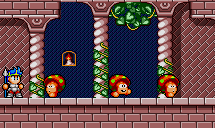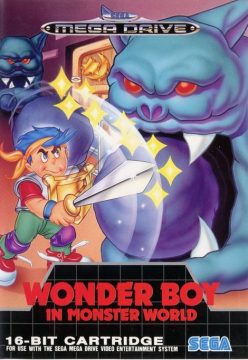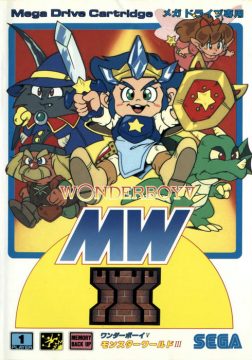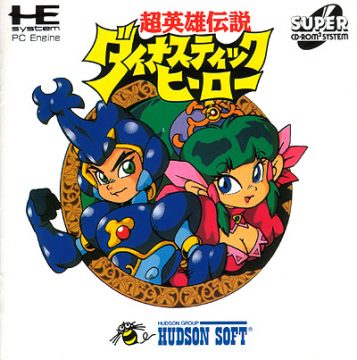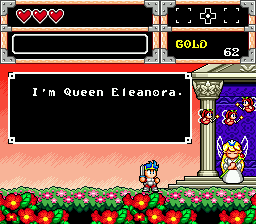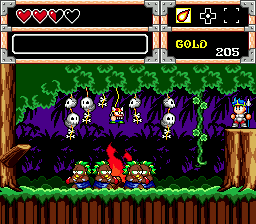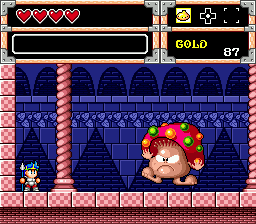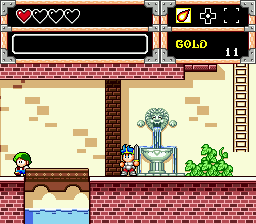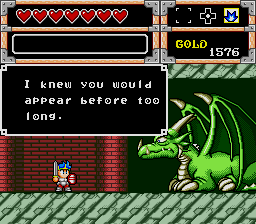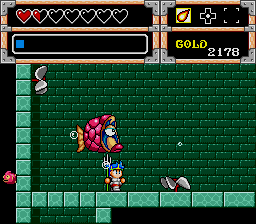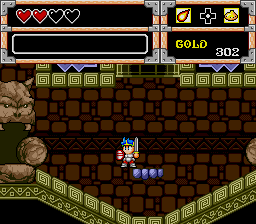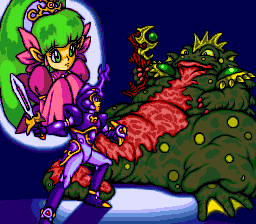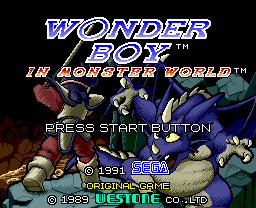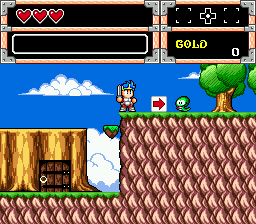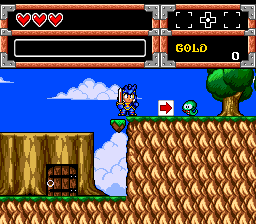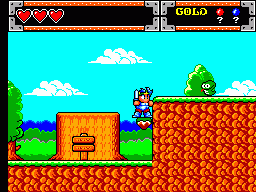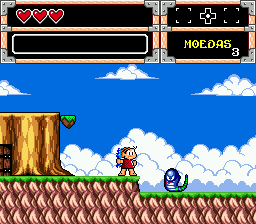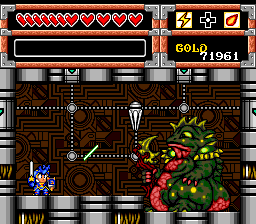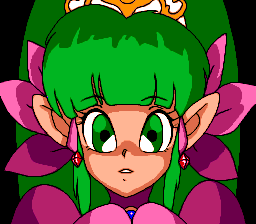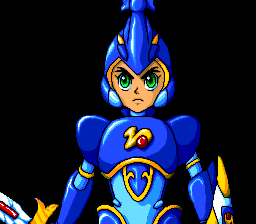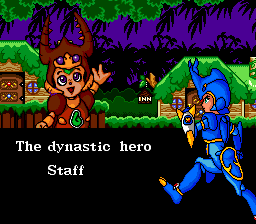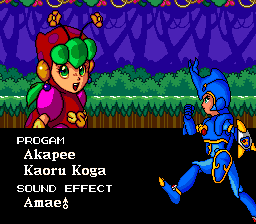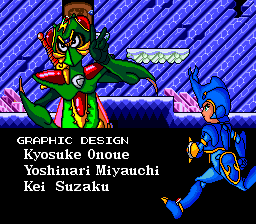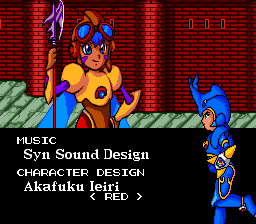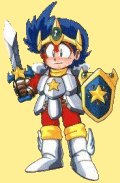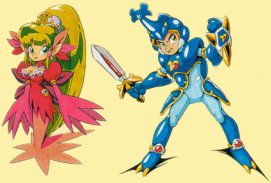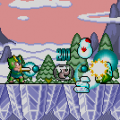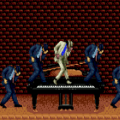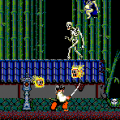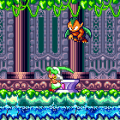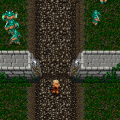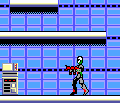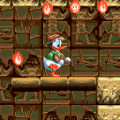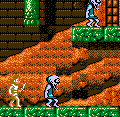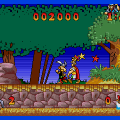The fifth Wonder Boy title (and third Monster World game) leaves behind the tale of Book, and instead concentrates on a new hero, a blue-haired boy named Shion. It’s another action-RPG, similar in structure to The Dragon’s Trap, but keeping some elements closer to the first Monster Land.
Most disappointingly, there are no longer multiple forms to change into, as Shion is a human throughout. He can wield two types of weapons: swords, which are short-ranged but can be used in conjunction with shields, and spears, which are longer but lack proper protection. However, many items let you obtain skills similar to the ones in the previous game, like the Poseidon Spear, which lets you swim, and the pygmy transformation, which lets you squeeze into small places.
Instead of multiple forms, in different parts of the game you are accompanied by a tiny familiar, a reference to the fairies from the original Wonder Boy. Priscilla is a fairy who can heal; Hotta is a dwarf child who can dig for gold; Shabo is a tiny Grim Reaper who can attack with his scythe; and Rotto is a young dragon child. They’re adorable, but their use is limited to specific dungeons.
The magic system has been improved, as you now learn spells rather than gathering individually used items. These spells have limited stocks, but are expanded as you discover more, and regenerate when you visit an inn. You can assign two spells at once, activated by pressing the A button and hitting either left or right.
The dungeons also feel like dungeons now, instead of just long, linear paths, and the world design is slightly more cohesive. There are many more hidden items compared to The Dragon’s Trap, where most of the heart containers were fairly easy to find. The Charm Points system has been abolished, and there are multiple towns rather than just a single central hub city. The password system is gone, replaced by a battery save.
Unfortunately, the action itself isn’t nearly as exciting as The Dragon’s Trap. Like Monster Land, your speed is based on the type of boots you have, but even at the fastest speed, you move relatively slowly. Combined with the short range of both weapon types, it’s a much more leisurely paced game, and one that doesn’t feel as fun to play.
The visuals are nice, but not drastically improved over its Master System predecessor. Once again, the status bar is a little too large, though the life bars for all enemies are rather handy. The close-ups of the shopkeepers are gone, and instead the exterior of the house becomes transparent when Shion enters. The music, while decent, is also a little too low key in many areas.
There are also plenty of references to the older Wonder Boy games. The second screen is practically identical to the opening of Monster Land. Right at the beginning, Shion rescues Princess Purapril, the descendant of the second player character in Monster Lair, who in turn gives her name to the town. Some of the enemies, like the colorful fish in Poseidon’s Realm, are taken from Monster Lair as well.
There’s another encounter with the Sphinx. She actually looks like the statue found in The Dragon’s Trap, and her quiz questions are now about specific things from earlier in the game. Even the finale, where the fantasy trappings give way to futuristic technology, is largely the same.
There are a few difficulty tweaks between the regional versions. In the Japanese release, dying sends you back to an inn with some reduced cash, while the English versions will send you to a Game Over screen, requiring the reloading of a save game. The final boss is also more difficult in the English release, with buzz saws having been added to the floor.
Initially released on the Genesis, Wonder Boy in Monster World was also ported to the Master System and released in Europe. While graphically it looks gorgeous, some technical problems keep it back. Your sword has an even shorter range, you can’t buy spears anymore, and the hit detection is awfully shady. The save feature is also gone, replaced with some very long passwords.
The TurboGrafx-16 CD version, published once again by Hudson, is known as The Dynastic Hero. As with the previous games, the plotline and characters have been changed completely, as the hero, now named Dyna, wears an extremely dorky blue suit of armor and a beetle shaped helmet. The rest of the characters follow the insect theme too, with completely new familiars and bosses, though the standard enemies are unchanged. The dragon village (and its familiar) has also been changed into a bee village.
The CD audio soundtrack is entirely different to the music in the Genesis version, and not nearly as good. The background graphics are pretty much the same, although there’s a nifty animated intro complete with a cheesy vocal song. The translation is also slightly different, with a bit more character. The difficulty was not changed for the localized version, so it’s easier than the English release of Monster World.
